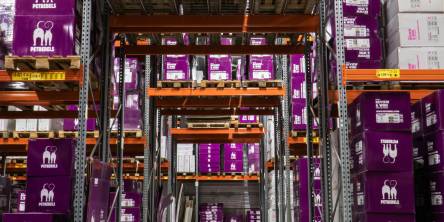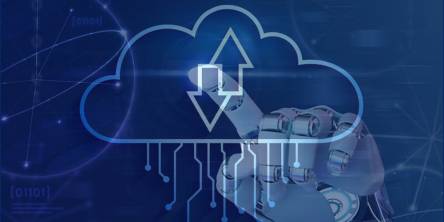Legacy Systems: What You Need to Know About Them

The world and many technologies it has been home to since time immemorial have evolved continually. Of course, this has had several implications for the world in general, especially when it comes to businesses. You see, technology has been an excellent resource, but it is typically an expensive affair. This is why companies usually don’t overhaul their technology stack as soon as something new comes in. As a result, plenty of companies worldwide are left with what is commonly known as a legacy system. But wait, what are legacy systems? Textbook definition of the legacy system describes it as a system based on archaic technologies that continue being a vital part of the business’ operations and strategies.
Of course, given that these systems are based on outdated technologies, there is a case to be made for legacy system modernization, i.e. updating the design and the IT stack. And yet, these companies that use legacy systems continue to shy away from it — why? They argue that their legacy systems have been calibrated according to the company’s unique requirements over the years. Furthermore, since they still manage to do exactly what’s expected of them, why would anyone bother changing the system?
While that’s a fair argument, there’s plenty of reasons why modernization is a must for legacy systems. Some of them have been discussed below in detail.
1. Costs for companies:
Research has shown that you end up spending a considerable amount of your IT budget on just maintenance with such systems. This includes efforts to fortify crumbling legacy systems that start to suffer the brunt of many issues, including their effectiveness, efficacy, cybersecurity, etc.
Then there is also the cost of lost opportunities. Yes, since your systems are outdated, they suffer from a lack of creativity and innovation.In turn, it takes a toll on the business’ profits and growth.
2. Integration challenges with legacy systems
It is a well-known fact that the modern crop of enterprise software typically needs to work and integrate with other company systems, third-party APIs, etc. to be fully effective. While these modern solutions offer ample support for integration across enterprise systems, they are typically not engineered to support archaic technologies.
This means to integrate such a solution with a legacy system will necessitate additional investment of time and money and effort. So, say you want to undertake a legacy application migration to cloud project — it won’t exactly be smooth sailing.
3. Security-related issues due to legacy systems
Security is among the most significant concerns in today’s world and rightly so! Alas, legacy systems fare poorly in this regard as well. This is because they are highly susceptible to all forms of malicious cyberattacks, malware, etc. Why? Because they make use of technologies and software that have been around so long that attackers have had plenty of time to figure out the vulnerabilities, weak points, etc.
And let’s not forget that obsolete software often doesn’t receive updates and support from the company after a particular time. It means there are no security patches or other relevant updates to ensure the legacy system is both up to date and in compliance with the security obligations.
Now, before you take the plunge, you must also understand the challenges and risks associated with it.
a. Attempting to modernize multiple legacy systems at one go and all of them together is a flawed strategy.
b. Shortage of experts and personnel with the requisite skills to modern systems while also keeping an eye on the legacy systems is among the most significant issues companies tend to face.
As you can see, there is a solid case to be made for legacy system modernization. The only thing you need to make sure is that you put together a proper strategy for the process.
Similar Articles
For modern businesses to thrive, ensuring the effective management of inventory stands has become vitally important. Inventory management stands as a cornerstone of success. And the emergence of the Internet of Things (IoT) has introduced a new era of connectivity and efficiency across diverse industries.
Do you know what the following e-commerce companies have in common: Amazon, Walmart, eBay, and more? All of these e-commerce companies' apps make use of Java. Java is decidedly among the leading choices of programming language for e-commerce applications because it offers a world of benefits; for example, since Java code can be run on any platform with a Java Virtual Machine (JVM), users of e-commerce apps made with Java can access the said apps on a variety of devices.
Nikola Tesla in 1926, once described what is now called a mobile phone as a telephone that can fit into one's “vest pocket.” As otherworldly as that idea was then, nearly a century later, the reality is even more astounding.
Given the staggeringly high amounts of data being generated worldwide every single day, it ought to come as no surprise that organizations often struggle to pick the right tools to help them effectively harness the potential of all their data.
Managing properties can be a difficult task with the right tools. Property owners must find and use the best property management software. It can be a long and tedious process as there are many options in the property management software market.
In the ever-evolving financial services landscape, industry challenges are numerous and complex. From stringent regulations to rapidly advancing technology and changing consumer expectations, financial institutions face many obstacles.
The human learning capability is a great resource for helping technology evolve and grow, breaking boundaries, and creating new ones. Emulating the ability of humans to learn at a gradual but retentive pace, Machine Learning is the latest power monster that is redefining human-machine interaction.
In the ever-evolving landscape of low-code development, Microsoft's Power Platform stands out as a powerful tool for building custom applications. In today's dynamic digital landscape, creating and managing web pages is no longer the exclusive realm of professional web developers
In the data-driven business world, where information is of utmost priority, organizations are increasingly turning to data warehousing and data marts to harness the power of their data. These data management solutions are pivotal in transforming raw data into actionable insights.









